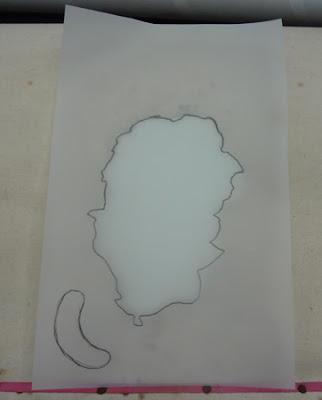 |
| Leonard Mitchell, New Zealand Centennial exhibition 1939 |
Selling the Dream: The Art of Early New Zealand Tourism is an ambitiously scaled book. I don't think there is any previous local publication which has comprehensively profiled the conversation between art, illustration and tourism. It shows our art history has avoided the mix between fine art, commercial art and trade development.
Simply put, this book overviews how tourism has been promoted through visual illustration. All the artwork is connected with marketing New Zealand as a venue for national and international tourism.
 |
| Stanley Davis, Time 1931 |
Decades ago many of New Zealand's towns and cities were connected by rail travel. It was our primary means of travel between the regions. The car took over by the mid 1950s and by the late 1960s air-travel became a preferred method of transportation. Rail was king first, though.
The Railways Department had its own Wellington-based art studio. Some of our most best illustrators produced railway banners, travel posters and booklets. Segueing with Railways was the National Publicity Studio developed to work across Government Departments by providing visual material fostering local travel. Railways had first started this notion by promoting tourism in the form of excursions and short-term holidays.
 |
| Peter Read, Carefree Holidays c1955 |
David Pollack evaluates how travel posters related to the international illustration tradition. No one working here had the vision of A.M. Cassandre, Edward McKnight Kauffer or Paul Nash. Their innovative work transformed European travel imagery by inserting the lessons they gained from modern art. In contradistinction, our travel poster artists were visually conservative and much of their work utilises the style of magazine illustration.
 |
| Railways Studios, Timaru by the Sea 1936 |
Richard Wolfe profiles the intermeshing between posters, stamp and booklet design as a way to promote ‘Māoriland’ to a country that was also deemed to be a ‘Playground of the Pacific’. It is fascinating to see how nation's self-branding is reduced to strap lines intended to shape visitor experience.
Mark Derby's essay overviews how influential Māoridom was to the marketing of tourism and how control of Māori representation was not determined by Māori. Mark's contribution to this book could have been given more space for amplification. The inclusion of G.F. Bridgman’s text on Poster Design shows how little researched our design history is. Incidentally, this fact brought to mind the fact that Dr Christopher Thompson could well have contributed to this book. He has more knowledge about design as a form of national marketing than anyone else in this area of art history.
 |
| Unknown, Tauranga for Winter Sunshine 1934 |
Lee Davidson reviews how mountain tourism established New Zealand’s reputation as an adventure playground. Going to alpine zones in trendy clothing has become totally inseparable from the marketing of our sportswear. New Zealand's garment industry sells more sportswear internationally than our boutique fashion houses do.
Gail Ross reveals how illustration became a career path for young artists from as early as 1900 while also mentoring immigrant artists who arrived under the La Trobe scheme. Her essay could have been more extensive as it was ranging over new perspectives on design history. The interface with National Publicity Studio merits much more research, especially now that their archive is more accessible.
 |
| Unknown, The Romance of the Rail 1928 |
Warren Feeney presents a fact often forgotten - ‘The fine arts in New Zealand have always sustained a mutual and beneficial relationship with commercial art.’ Warren’s position is revisionist and all the more impressive because of this approach. I like the way he takes a provocative position to break down the high/low art relationship between painting and illustration. Look at this sentence -‘By the 1950s, the fine arts began to catch up with commercial art.’ I doubt whether I would have read statement that in any New Zealand art book a generation ago.
Barry Hancox indicates that photography and tourist publicity have always intersected here. Late 19th century landscape photography by artists such as Daniel Louis Mundy predated tourist art but showed a way of looking that later influenced it. The conversation between pictorialism and illustrative design is only just beginning to be analysed.
Selling the Dream: The Art of Early New Zealand Tourism deserves close study. It gathers images few people will have encountered outside archives or museums. They have probably never encountered them in a public art gallery. No big exhibition of this material has been attempted. This book is as much about art as it is about New Zealand's promotion of visual identity.
 |
| Alan Collins, Night travel is easy c1950 |
Peter Alsop, Gary Stewart, Dave Bamford
Selling the Dream: The Art of Early New Zealand Tourism
Craig Potton Publishing, Nelson 2012
ISBN 978 1 877517 77 8
Peter Alsop informs me that this book is available from all leading bookstores, and online with a 10% discount and free postage within New Zealand from www.sellingthedream.co.nz





































